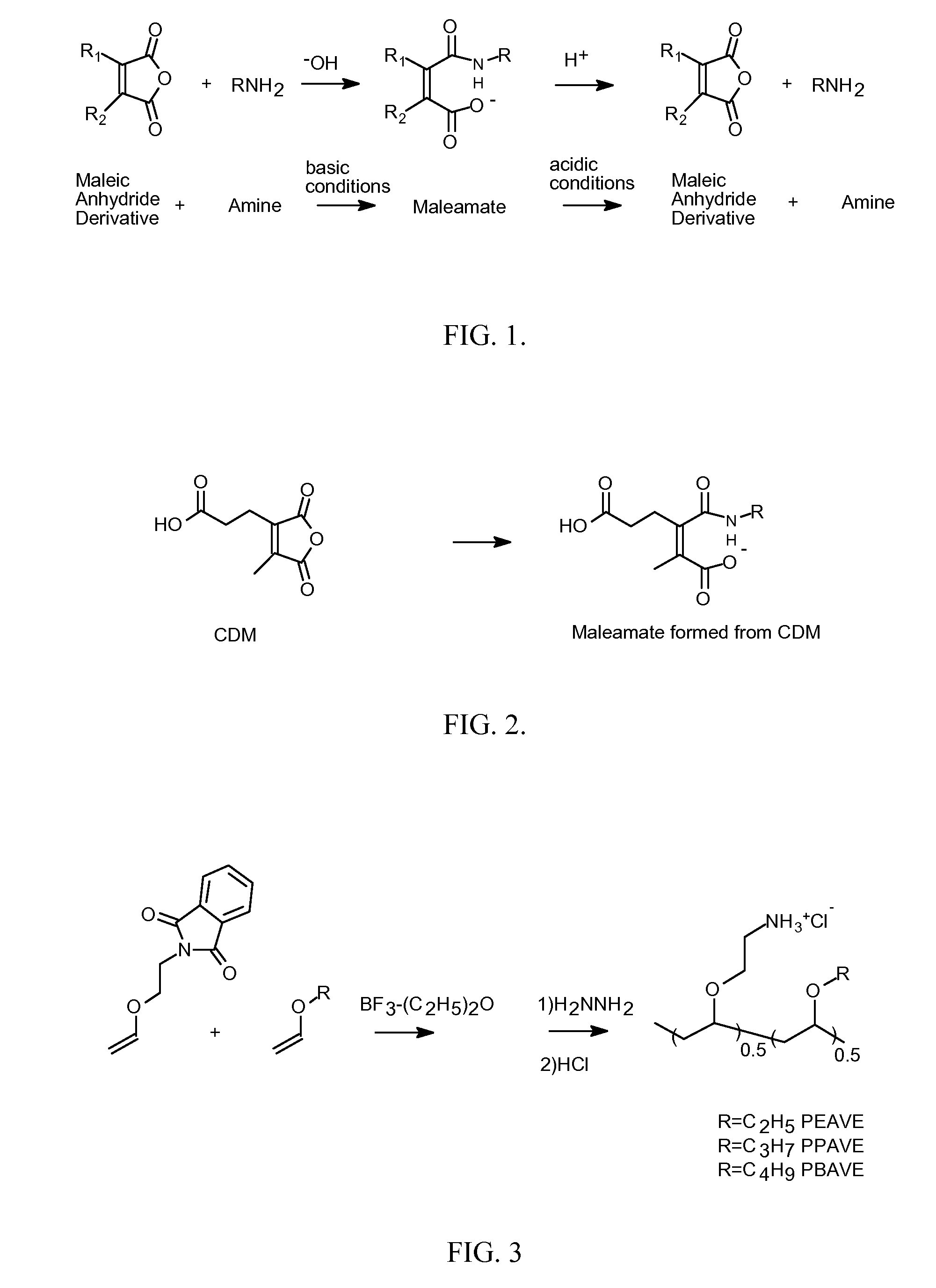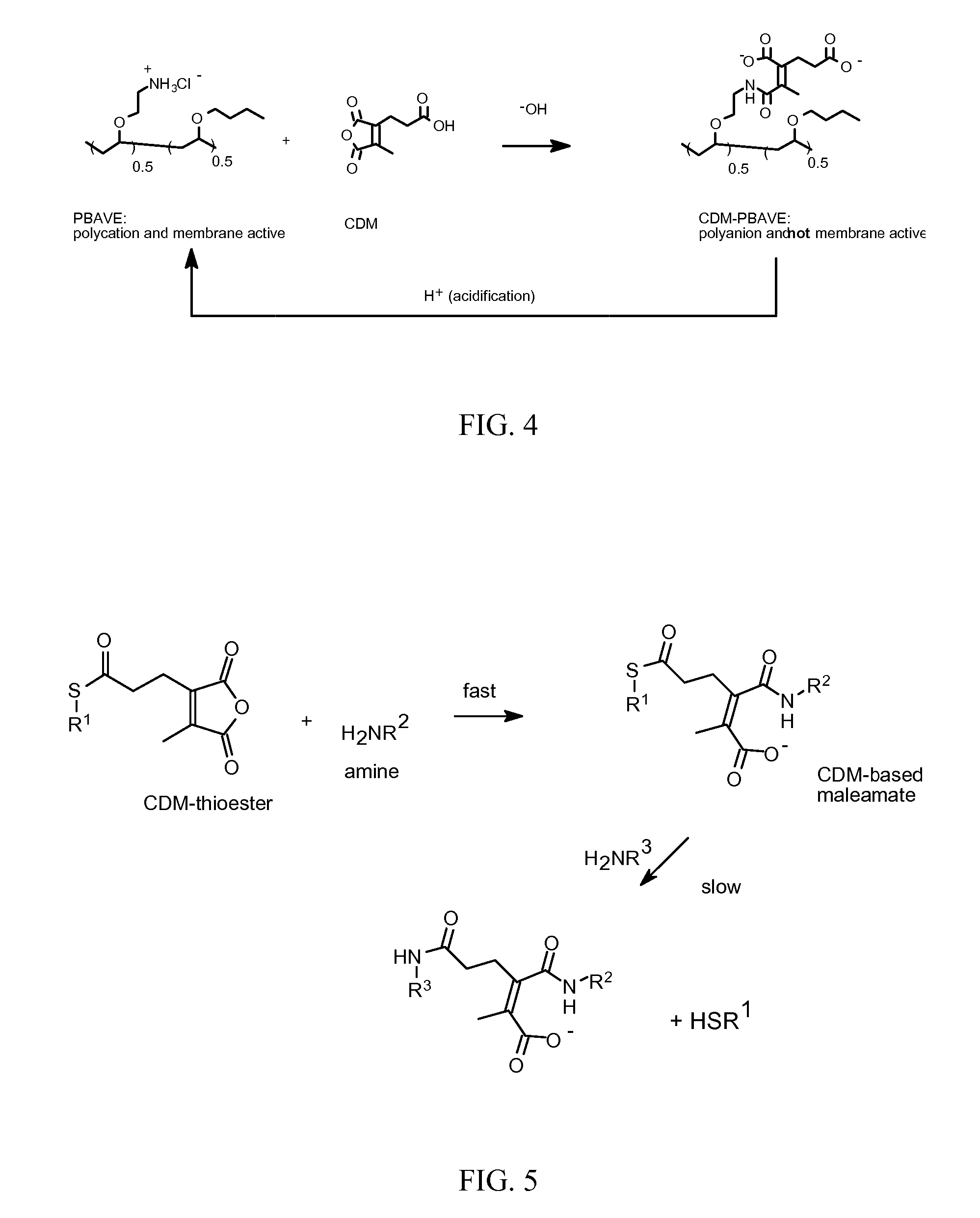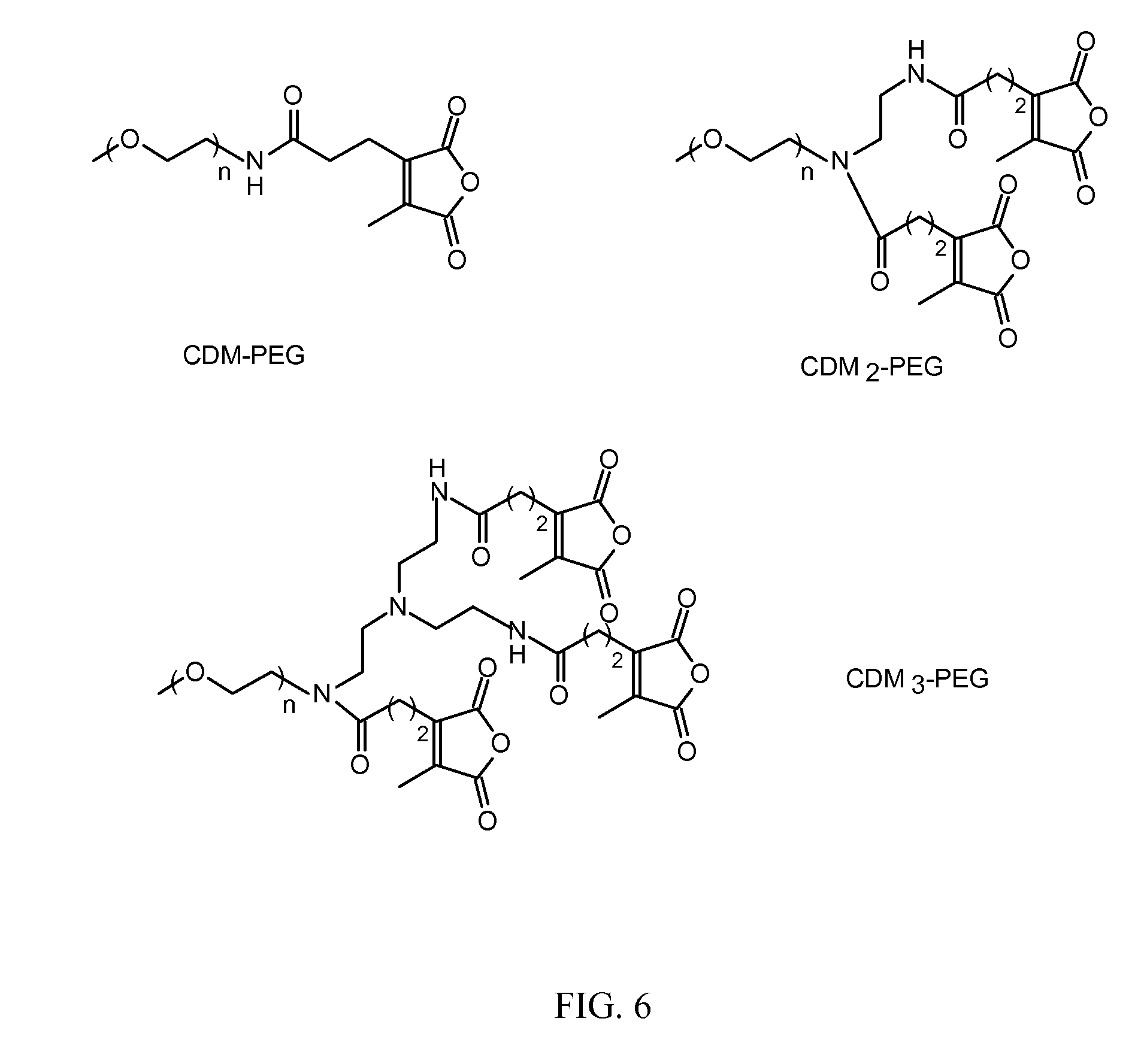Endosomolytic polymers
a polymer and endosome technology, applied in the field of endosome polymerization polymer, can solve the problems of toxic or poor biodistribution of compounds which may possess good endosome disruption activity, the inability to form an efficient non-viral delivery vector in practice, and the toxicity of cationic polymers or lipids which are good at condensing dna, etc., to achieve the effect of increasing the negative charge of nanoparticles, reducing the positiv
- Summary
- Abstract
- Description
- Claims
- Application Information
AI Technical Summary
Benefits of technology
Problems solved by technology
Method used
Image
Examples
example 1
Synthesis of 2-propionic-3-methylmaleic anhydride (carboxydimethylmaleic anhydride or CDM).
[0052]To a suspension of sodium hydride (0.58 g, 25 mmol) in 50 mL anhydrous tetrahydrofuran was added triethyl-2-phosphonopropionate (7.1 g, 30 mmol). After evolution of hydrogen gas had stopped, dimethyl-2-oxoglutarate (3.5 g, 20 mmol) in 10 mL anhydrous tetrahydrofuran was added and stirred for 30 minutes. Water, 10 mL, was then added and the tetrahydrofuran was removed by rotary evaporation. The resulting solid and water mixture was extracted with 3×50 mL ethyl ether. The ether extractions were combined, dried with magnesium sulfate, and concentrated to a light yellow oil. The oil was purified by silica gel chromatography elution with 2:1 ether:hexane to yield 4 g (82% yield) of pure triester. The 2-propionic-3-methylmaleic anhydride was then formed by dissolving of this triester into 50 mL of a 50 / 50 mixture of water and ethanol containing 4.5 g (5 equivalents) of potassium hydroxide. Thi...
example 2
Synthesis of CDM thioester.
[0053]To a solution of 2-propionic-3-methylmaleic anhydride (30 mg, 0.16 mmol) in 5 mL methylene chloride was added oxalyl chloride (200 mg, 10 eq) and dimethylformamide (1 μL). The reaction was allowed to proceed overnight at which time the excess oxalyl chloride and methylene chloride were removed by rotary evaporation to yield the acid chloride, a clear oil. The acid chloride was dissolved in 1 mL of methylene chloride. To this solution was added 2 equivalents thioglycolic acid, and pyridine (20 μL, 1.5 eq) in 10 mL of methylene chloride. The solution was then stirred overnight. The solvent was then removed and the resulting solid was dissolved into 5 mL of water and purified using reverse-phase HPLC using a 0.1% TFA water / acetonitrile gradient.
example 3
Synthesis of Polyvinylethers.
[0054]2-Vinyloxy Ethyl Phathalimide (1 g, 4.6 mmol) was added to a oven dried round bottom flask under a blanket of nitrogen in anhydrous dichloromethane to this solution was added ethyl vinyl ether (0.332 g, 4.6 mmol), propyl vinyl ether (0.396 g, 4.6 mmol) or butyl vinyl ether (0.460 g, 4.6 mmol). These solutions were then brought to −78° C. and BF3.OEt2 (0.065 g, 0.46 mmol) is added and the reaction is allowed to proceed for 2 hours at −78° C. The polymerization is then stopped by the addition of 50 / 50 mixture of ammonium hydroxide in methanol. The solvents are then removed by rotary evaporation. The polymer is then dissolved in 30 mL of 1,4-dioxane / methanol (2 / 1). To this solution was added hydrazine (0.147 g, 46 mmol) and the mixture was heated to reflux for 3 hours. The solvents are then removed by rotary evaporation and the resulting solid was then brought up in 20 mL of 0.5M HCl and refluxed for 15 minutes, diluted with 20 mL distilled water, and...
PUM
| Property | Measurement | Unit |
|---|---|---|
| molecular weight | aaaaa | aaaaa |
| molecular weight | aaaaa | aaaaa |
| pH | aaaaa | aaaaa |
Abstract
Description
Claims
Application Information
 Login to View More
Login to View More - R&D
- Intellectual Property
- Life Sciences
- Materials
- Tech Scout
- Unparalleled Data Quality
- Higher Quality Content
- 60% Fewer Hallucinations
Browse by: Latest US Patents, China's latest patents, Technical Efficacy Thesaurus, Application Domain, Technology Topic, Popular Technical Reports.
© 2025 PatSnap. All rights reserved.Legal|Privacy policy|Modern Slavery Act Transparency Statement|Sitemap|About US| Contact US: help@patsnap.com



